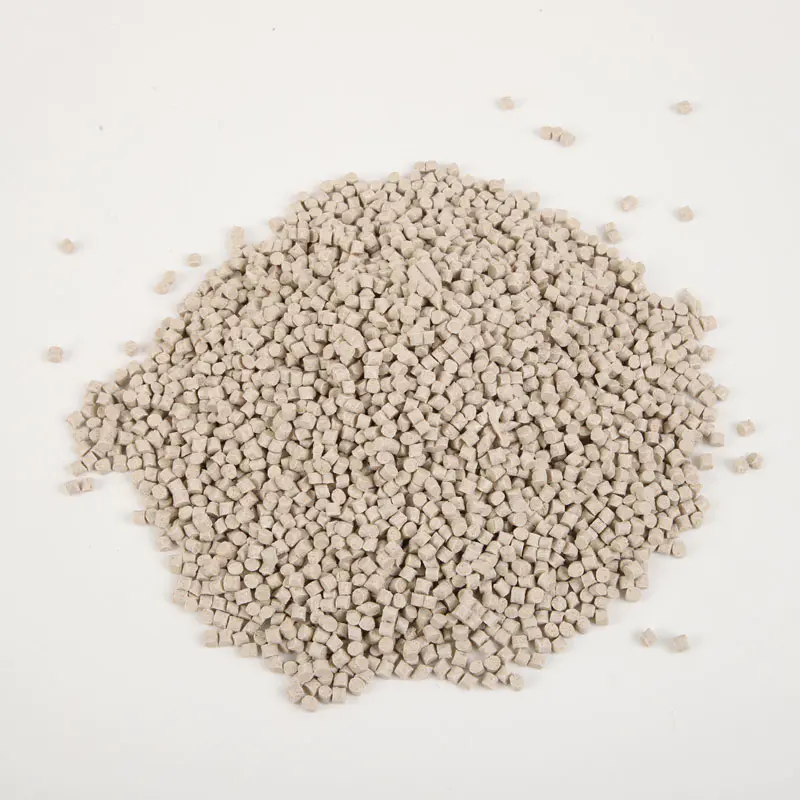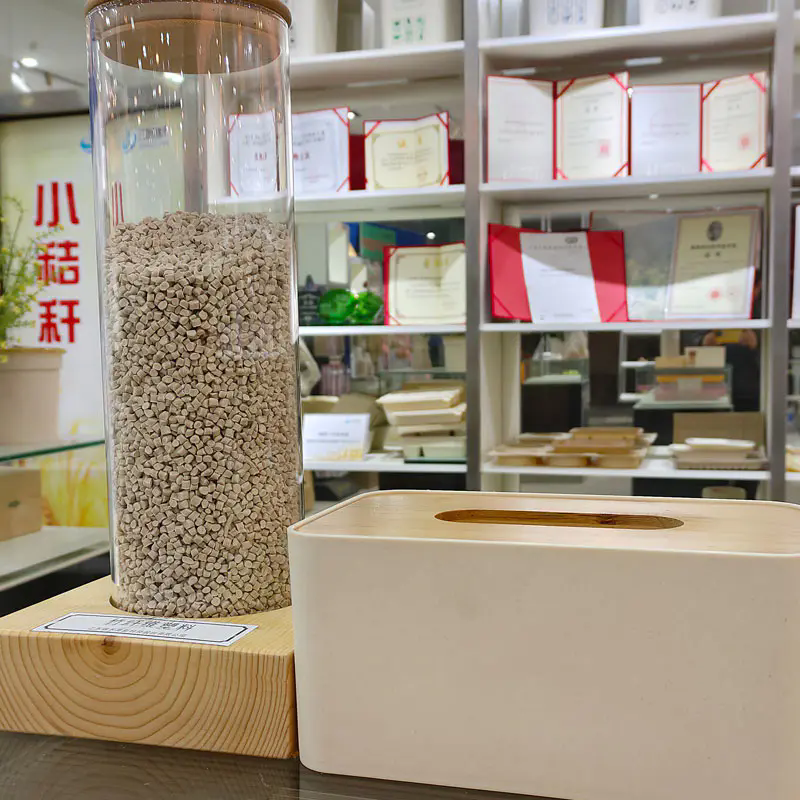What Makes Starch-Based Plastic the Future of Sustainable Materials?
Starch-based plastic, also known as bioplastic derived from starch polymers, is an innovative material designed to reduce dependence on petroleum-based plastics. It is primarily produced using natural starch extracted from renewable sources such as corn, potatoes, wheat, or cassava. This type of plastic represents a crucial step forward in sustainable materials, as it offers similar functionality to conventional plastics while being biodegradable and compostable under industrial conditions.
The fundamental composition of starch-based plastic lies in its biodegradable polymer structure. Starch granules contain amylose and amylopectin, which can be thermoplastically processed when mixed with plasticizers like glycerol or sorbitol. During manufacturing, the starch is heated and combined with biodegradable polyesters such as polylactic acid (PLA) or polybutylene adipate terephthalate (PBAT), improving flexibility and durability. The result is a bio-composite material capable of replacing traditional plastic applications in packaging, agriculture, and disposable goods.
Typical Product Parameters of Starch-Based Plastic:
| Parameter | Specification |
|---|---|
| Raw Material Source | Corn starch, potato starch, cassava starch |
| Density | 1.2 – 1.3 g/cm³ |
| Biodegradability | 100% compostable under industrial composting (within 6–12 months) |
| Tensile Strength | 20–40 MPa |
| Melting Point | 120–160°C |
| Moisture Resistance | Moderate, can be enhanced with coating |
| Processing Methods | Extrusion, injection molding, film blowing |
| Additives | Glycerol, PLA, PBAT, calcium carbonate |
This technical flexibility allows starch-based plastic to be customized for various end uses, including food packaging films, compostable bags, agricultural mulch films, and even single-use tableware. With its natural biodegradation properties, it offers a promising alternative for industries seeking to align with global sustainability goals.
Why Is Starch-Based Plastic Gaining Global Attention?
The rising interest in starch-based plastics can be attributed to growing environmental awareness and the global movement toward circular economy principles. Traditional plastics, derived from fossil fuels, have caused severe environmental challenges, including microplastic pollution and greenhouse gas emissions. Starch-based plastic, however, addresses these concerns through renewable sourcing and natural decomposition.
Key Advantages of Starch-Based Plastic:
-
Eco-Friendly Composition – Being sourced from natural crops, starch-based plastics are renewable and sustainable, reducing reliance on fossil resources.
-
Biodegradability – Unlike conventional plastics that persist for centuries, starch-based plastics decompose into carbon dioxide, water, and biomass under proper composting conditions.
-
Reduced Carbon Footprint – The production of starch-based plastic emits significantly fewer greenhouse gases compared to petroleum-based plastics.
-
Versatility in Application – Its properties can be engineered to meet different industrial needs, including packaging, agriculture, and consumer goods.
-
Compliance with Global Regulations – Many countries are banning single-use plastics, driving companies to adopt biodegradable alternatives such as starch-based plastics.
Environmental Impact:
When discarded, starch-based plastic naturally breaks down through microbial activity. This process returns the material’s components to the environment without leaving toxic residues. Such eco-friendly degradation supports the development of a sustainable waste management system, making starch-based plastics an ideal choice for environmentally conscious industries.
Moreover, with advancements in polymer technology, starch-based plastics have achieved greater durability and improved mechanical properties, making them competitive alternatives to conventional plastics in both performance and cost efficiency.
How Is Starch-Based Plastic Used Across Industries?
The application of starch-based plastic extends beyond simple packaging. As industries seek green alternatives, this biodegradable material has been adopted across multiple sectors for its adaptability and environmental benefits.
Main Application Areas:
-
Packaging Industry – Starch-based plastics are widely used in food packaging films, shopping bags, and disposable containers. Their ability to preserve freshness while maintaining biodegradability makes them highly suitable for eco-conscious brands.
-
Agriculture – Used in mulch films, seedling trays, and compostable plant pots, starch-based plastics prevent soil contamination and promote sustainable farming practices.
-
Medical and Hygiene Products – With its safe, non-toxic nature, starch-based plastic can be used in medical packaging, disposable gloves, and sanitary items.
-
3D Printing and Engineering Materials – Biocompatibility and easy processability make starch-based polymers valuable for prototyping and light engineering uses.
-
Consumer Goods – Products like cutlery, cups, and straws made from starch-based plastic reduce waste and support eco-friendly lifestyles.
How It Is Processed:
Starch-based plastic production typically involves gelatinization, blending, extrusion, and molding. The starch is first heated with plasticizers to form thermoplastic starch (TPS). It is then blended with other biodegradable polymers to enhance mechanical strength and flexibility. Finally, the material is processed using conventional plastic-forming equipment such as extrusion or injection molding lines, allowing seamless integration into existing manufacturing systems.
The cost of starch-based plastics has also decreased due to technological progress and larger-scale production, making them an increasingly practical option for manufacturers worldwide. The compatibility of starch-based materials with existing plastic processing technologies further supports their widespread adoption.
What Are the Future Trends and Market Outlook for Starch-Based Plastics?
As sustainability becomes a global priority, starch-based plastics are expected to play a pivotal role in shaping the future of eco-friendly materials. Governments worldwide are enforcing stricter regulations against petroleum-based plastics, while consumers demand environmentally responsible packaging and products.
Emerging Trends:
-
Integration with Advanced Polymers: New blends combining starch with PLA, PBAT, or PHA enhance flexibility, transparency, and strength, expanding possible applications.
-
Smart Bioplastics: Researchers are developing starch-based plastics with added functionalities such as antimicrobial properties or oxygen barriers for food safety.
-
Circular Economy Initiatives: More companies are shifting to closed-loop systems, where starch-based packaging is composted and returned to agricultural production cycles.
-
Cost Optimization: Innovations in raw material sourcing, including the use of waste starch from agriculture, are helping lower production costs.
-
Global Expansion: Asia, Europe, and North America are all investing heavily in bioplastic infrastructure, with starch-based plastics leading due to raw material availability and biodegradability advantages.
Market Forecast:
The global starch-based plastic market is projected to grow steadily over the next decade, driven by government incentives, consumer awareness, and brand sustainability commitments. Packaging remains the largest segment, followed by agriculture and consumer goods. As technology improves, starch-based plastics will continue to close the performance gap with conventional plastics while maintaining their ecological benefits.
Challenges Ahead:
While promising, starch-based plastics face certain limitations such as moisture sensitivity and slightly higher costs compared to petroleum-based plastics. However, these issues are being addressed through continuous research in material science and production efficiency. The development of hybrid materials and advanced coatings is expected to overcome these challenges, making starch-based plastics more durable and affordable.
Common FAQs About Starch-Based Plastic
Q1: Is starch-based plastic completely biodegradable in home environments?
A1: Starch-based plastics are biodegradable, but the rate and completeness of degradation depend on environmental conditions. Under industrial composting (with controlled temperature and humidity), they can decompose fully within six to twelve months. In natural environments, such as home composting, the process may take longer, but it still results in non-toxic residues and natural biomass.
Q2: Can starch-based plastic replace traditional plastic entirely?
A2: Starch-based plastic can replace many, but not all, traditional plastics. It is ideal for single-use products, packaging, and agricultural applications where biodegradability is essential. However, for heavy-duty or high-temperature applications, further material improvements are required. With ongoing advancements, starch-based plastics are increasingly bridging this performance gap.
Conclusion
Starch-based plastic represents a significant advancement in the transition toward sustainable and environmentally responsible materials. Combining renewable agricultural resources with advanced polymer technologies, it delivers both performance and biodegradability. As industries and consumers continue to seek green alternatives, starch-based plastics are positioned to become a leading solution for reducing global plastic pollution and supporting circular economies.
Jiangsu Jinhe, a professional manufacturer dedicated to eco-friendly polymer materials, specializes in the research, development, and production of high-performance starch-based plastics. With advanced processing technologies and a strong commitment to sustainability, Jiangsu Jinhe provides innovative bioplastic solutions tailored to various industrial applications worldwide.
For customized starch-based plastic solutions or partnership inquiries, Contact Us today to explore how Jiangsu Jinhe can support your sustainable material goals.
-
- What Makes Straw Fiber Plastic the Future of Eco-Friendly Materials?
- What Makes Bamboo Fiber Plastic the Future of Sustainable Material Innovation?
- Why choose Bio-Based Plastic for Sustainable Materials?
- What are the functions of Sustainable Coffee Grounds Plastic?
- What is the Difference between Sustainable Bamboo Fiber Plastic and Regular Plastic?
- How Do You Properly Dispose of Disposable Biodegradable Plates?














